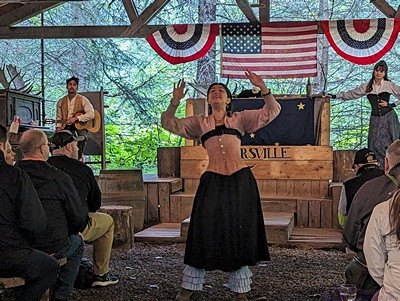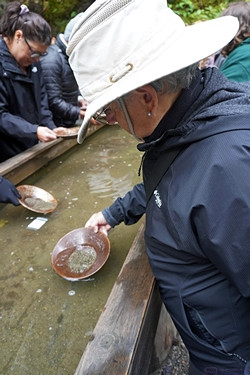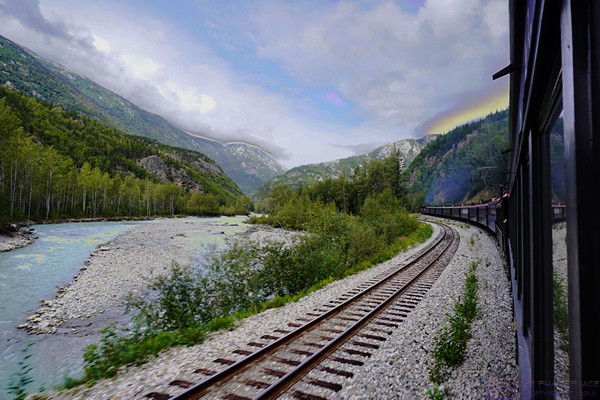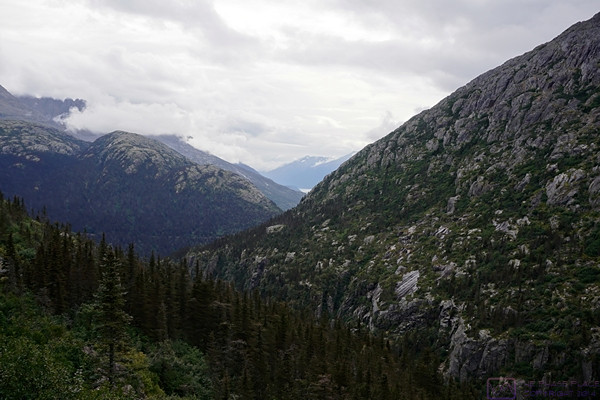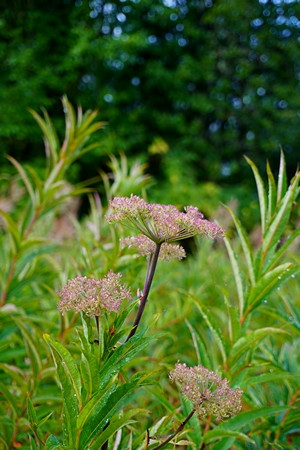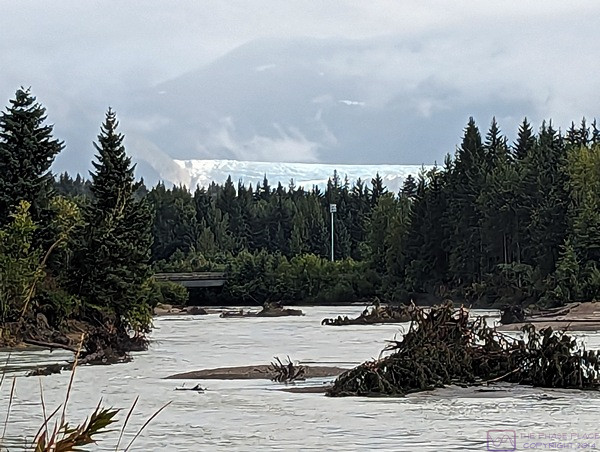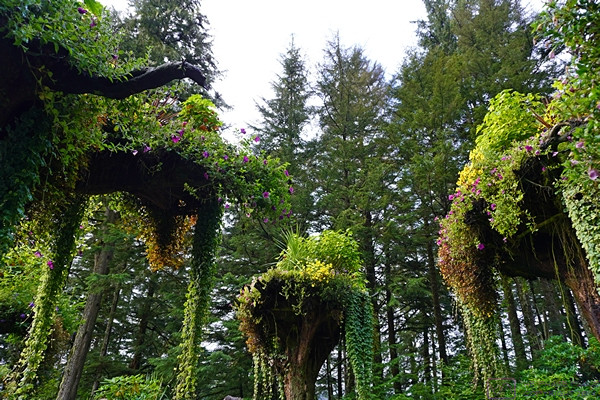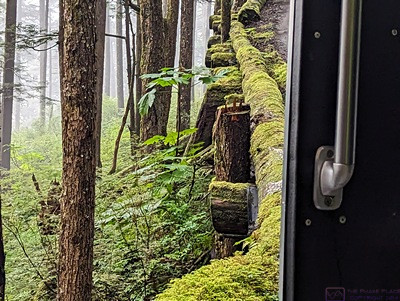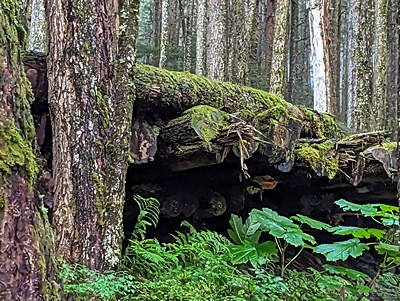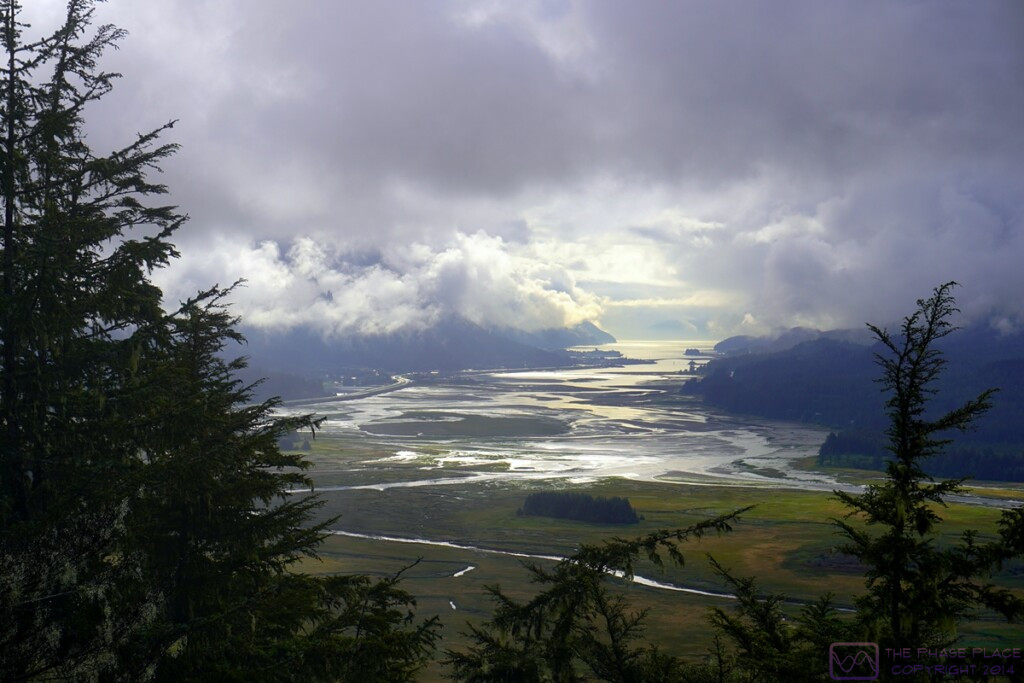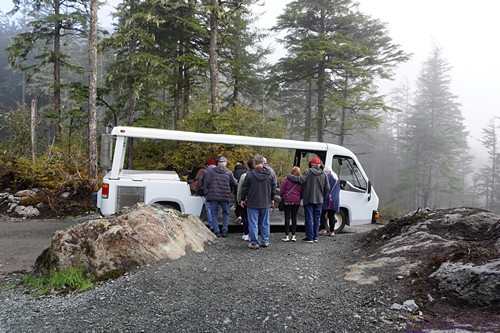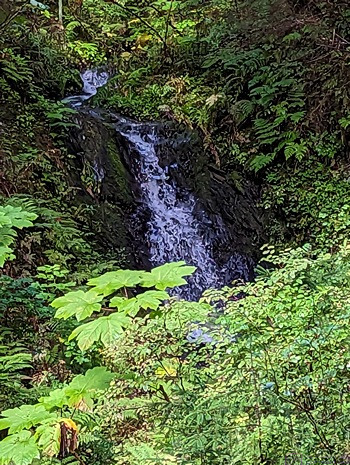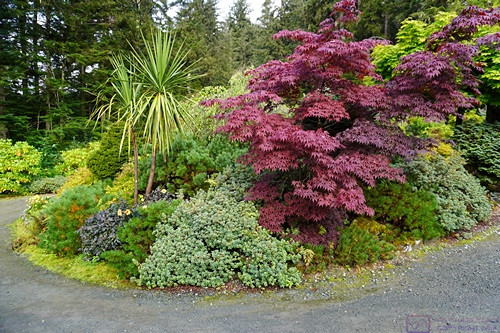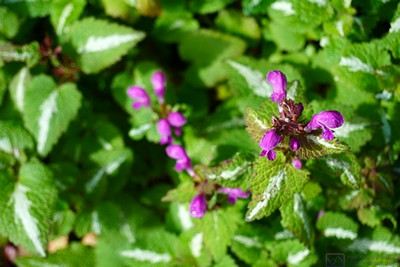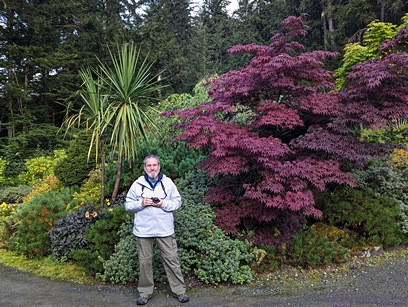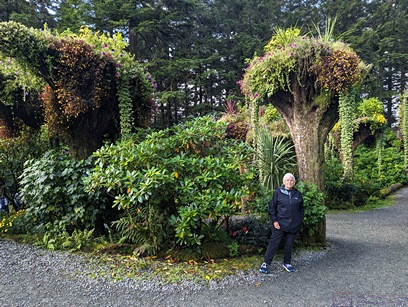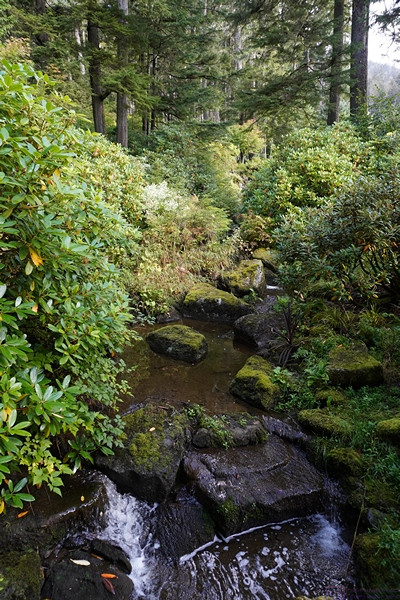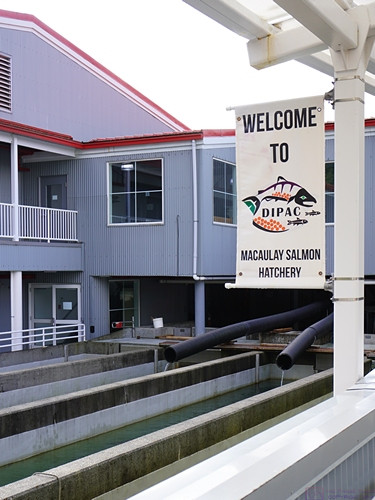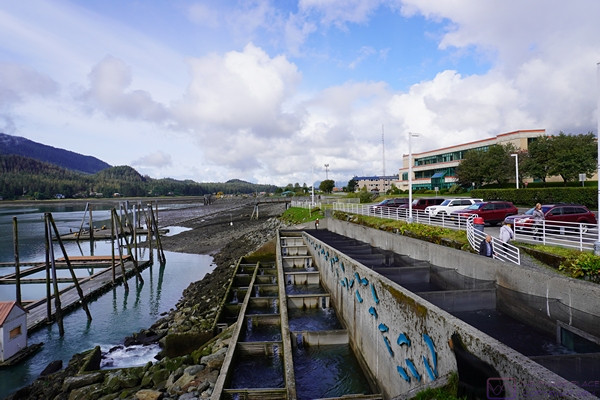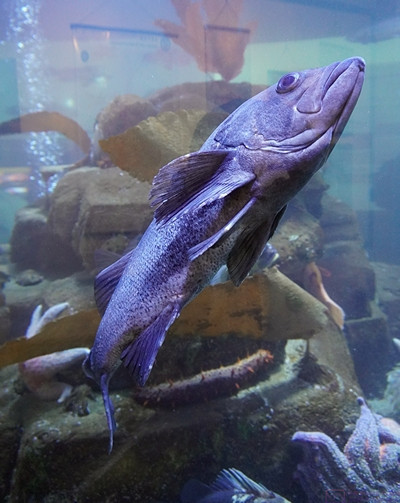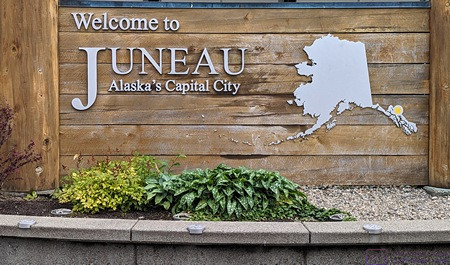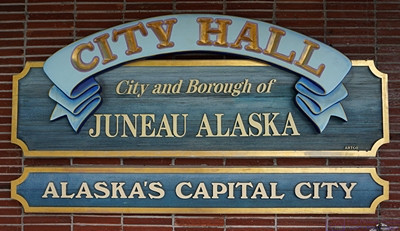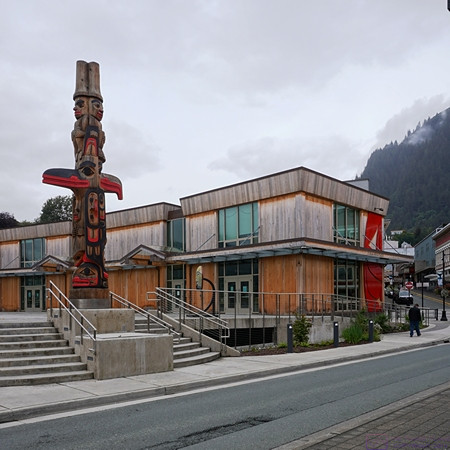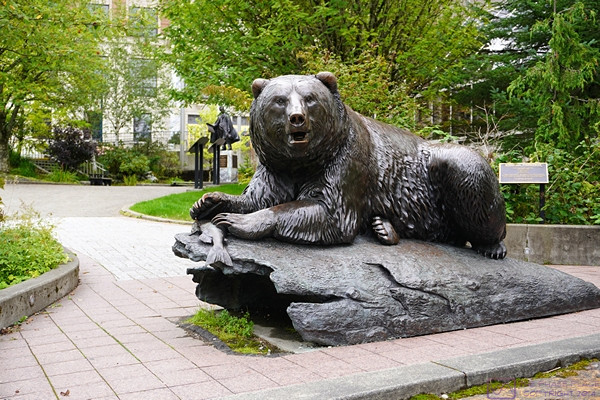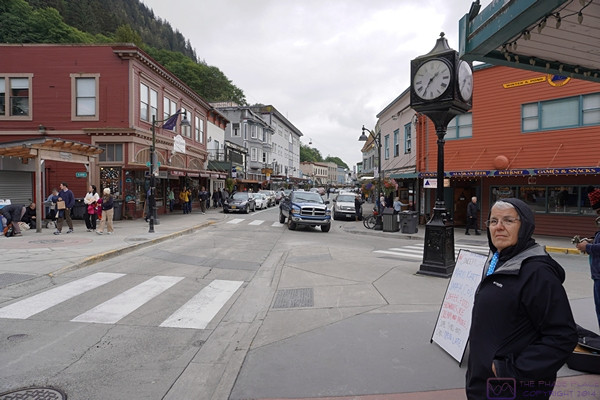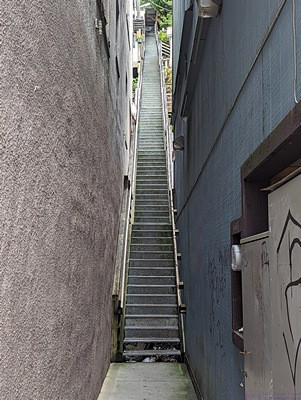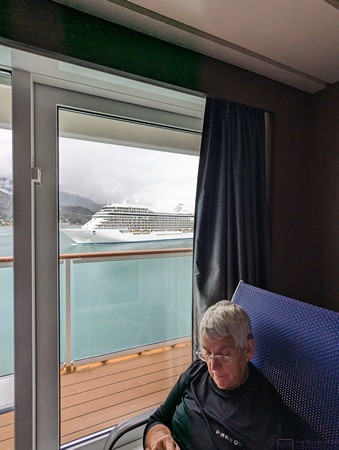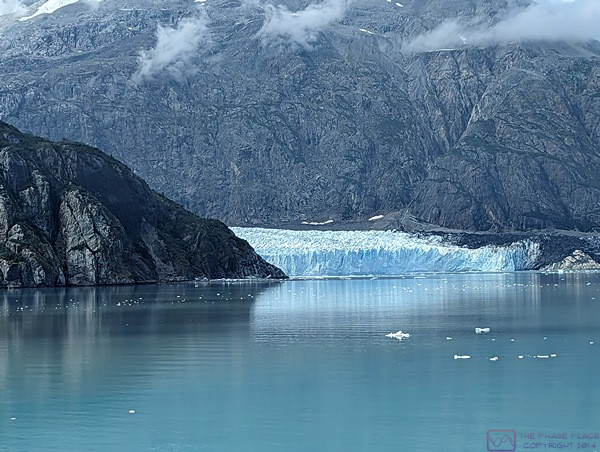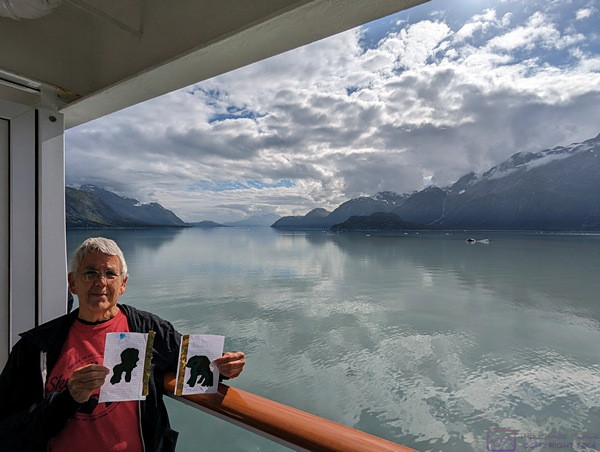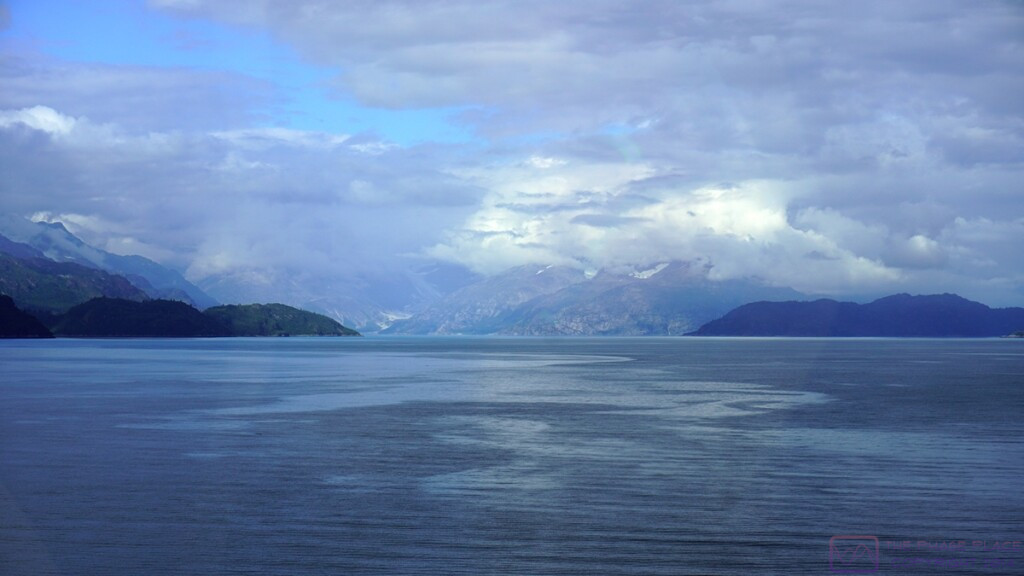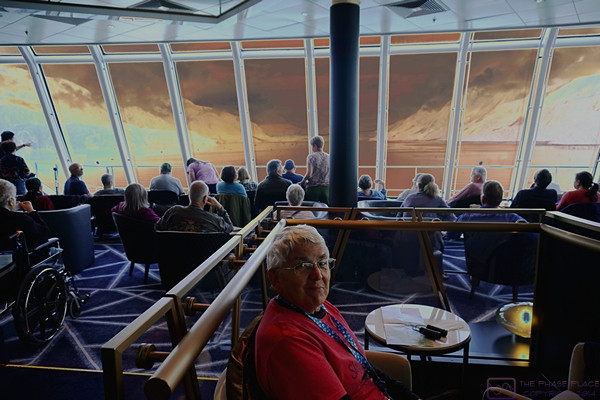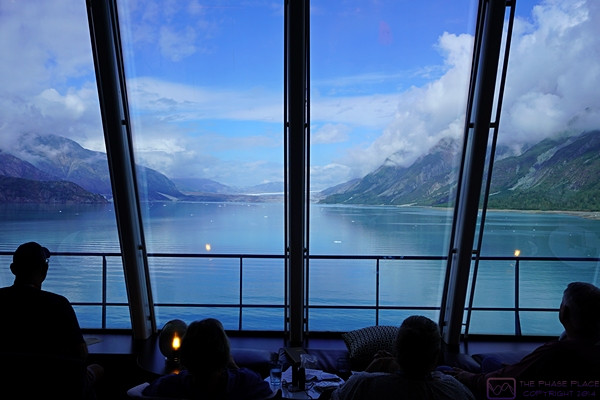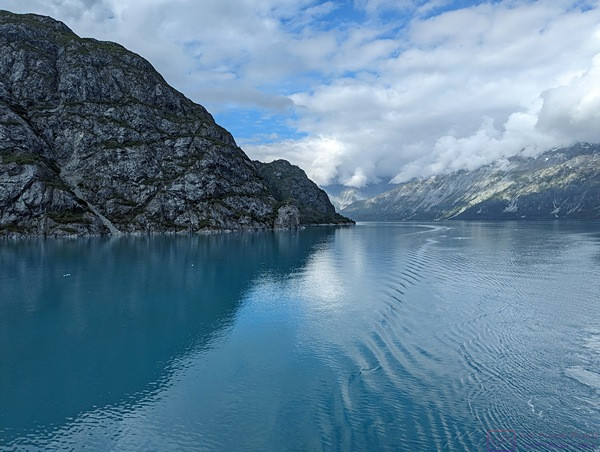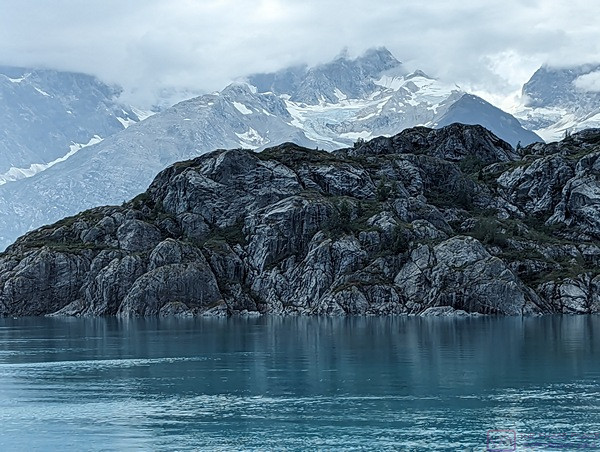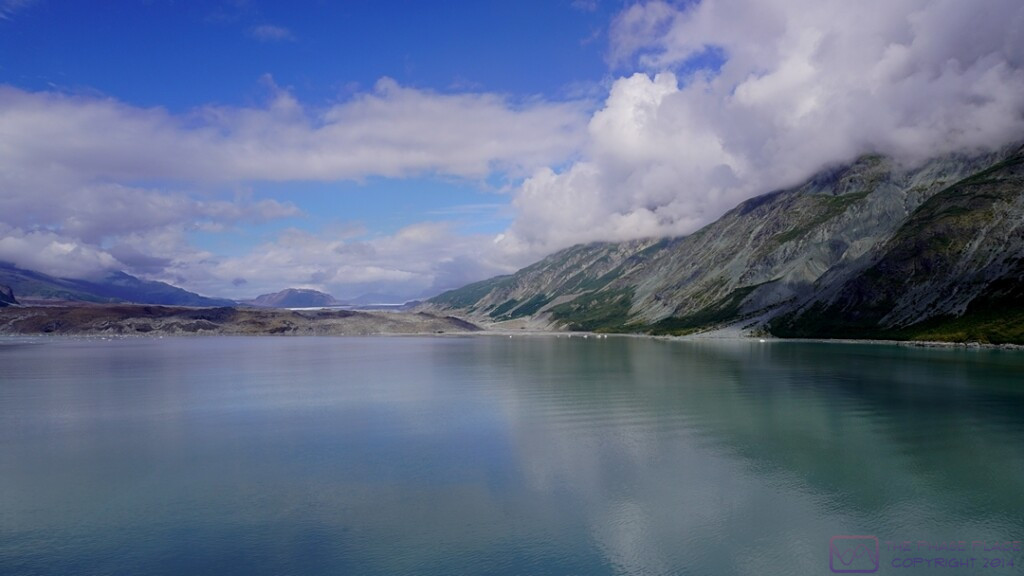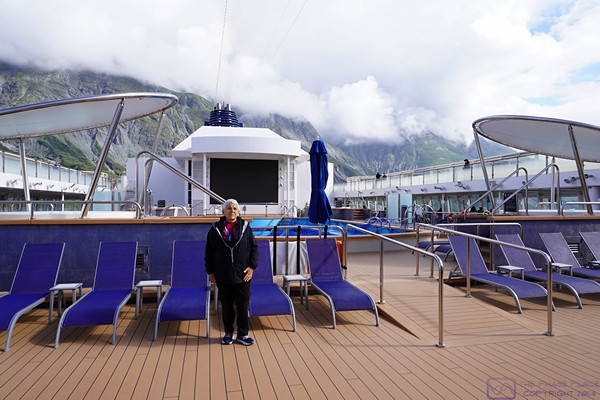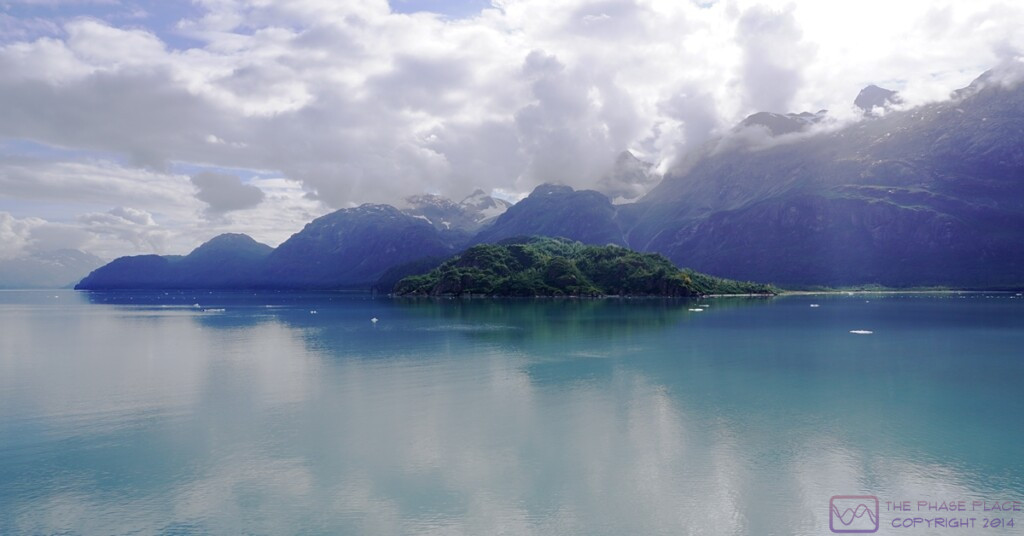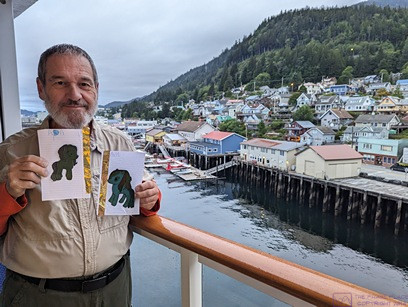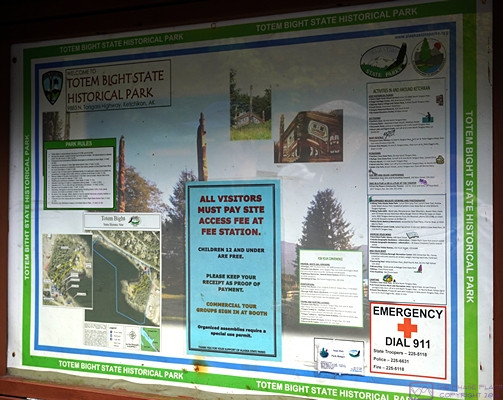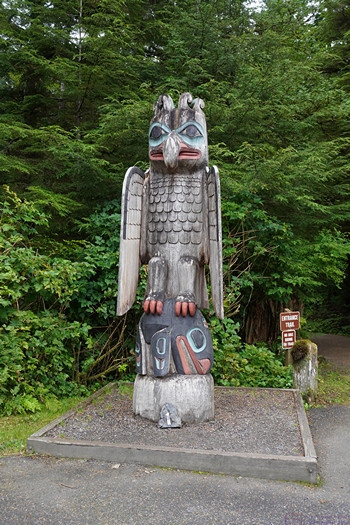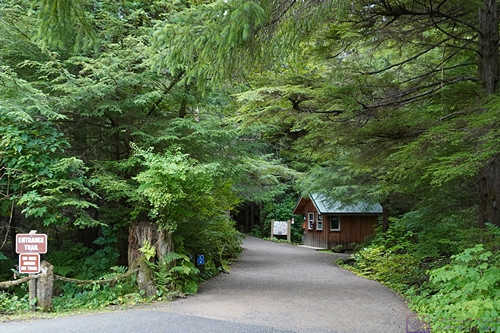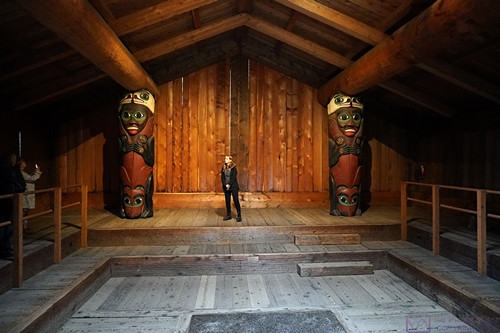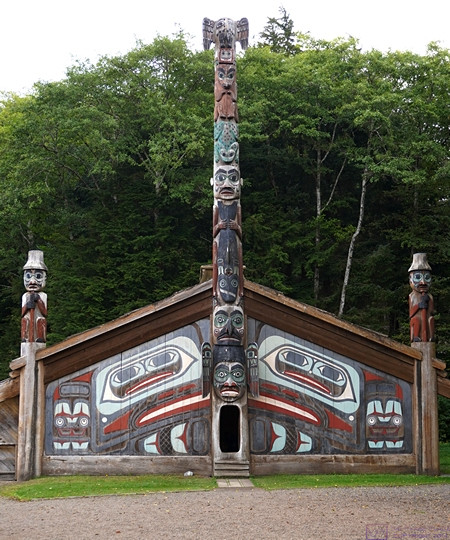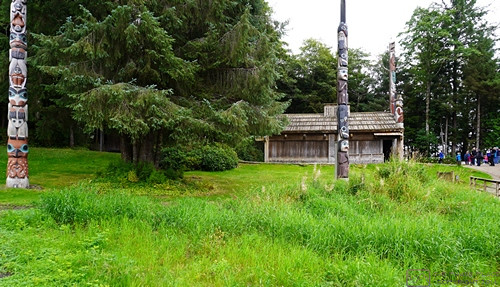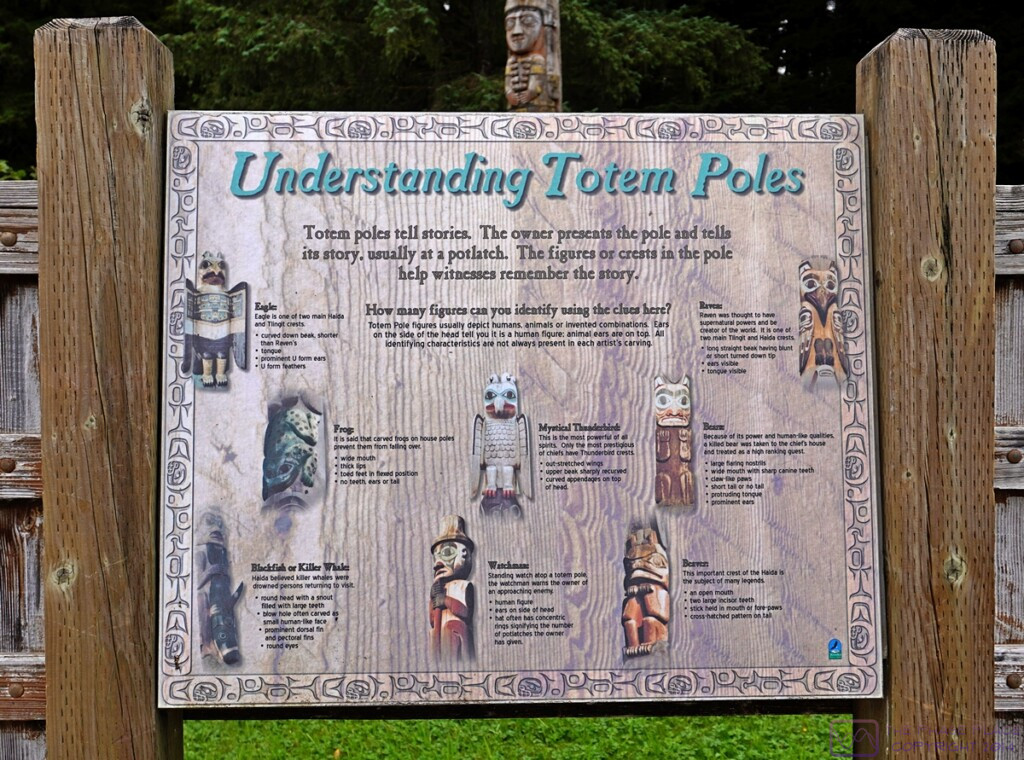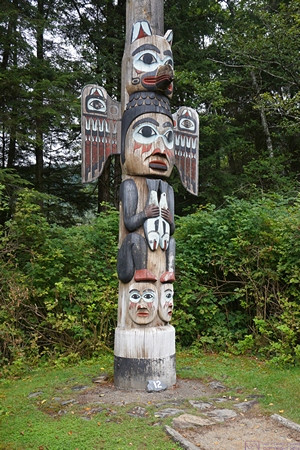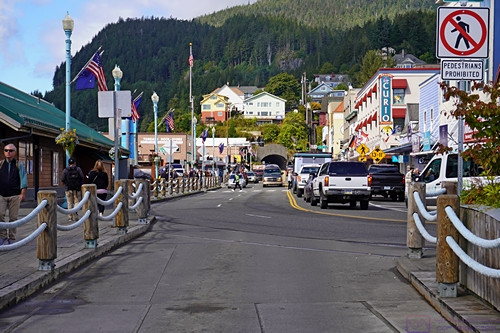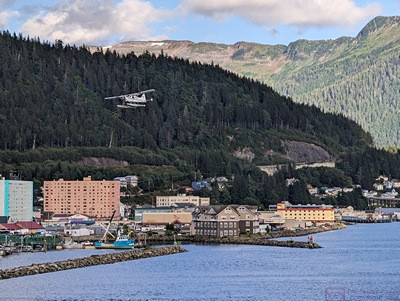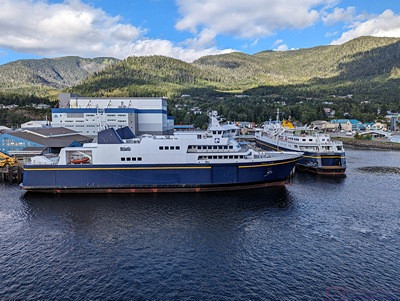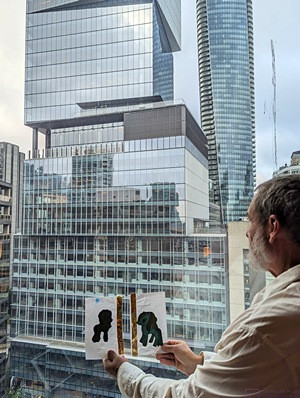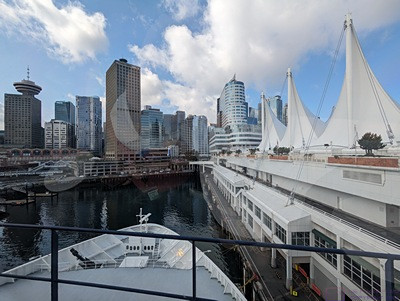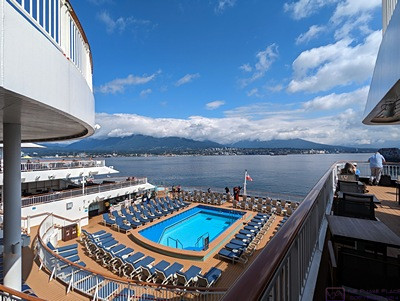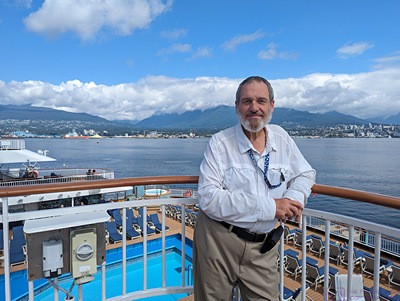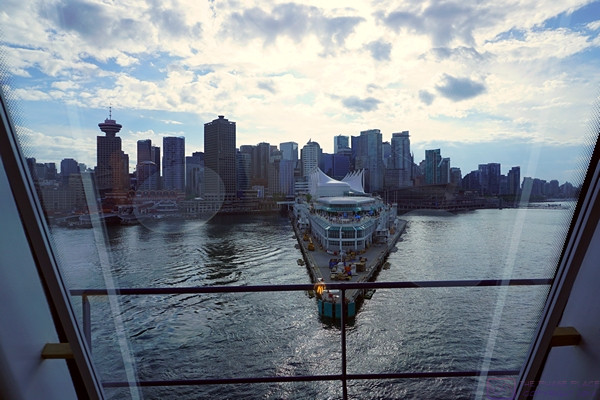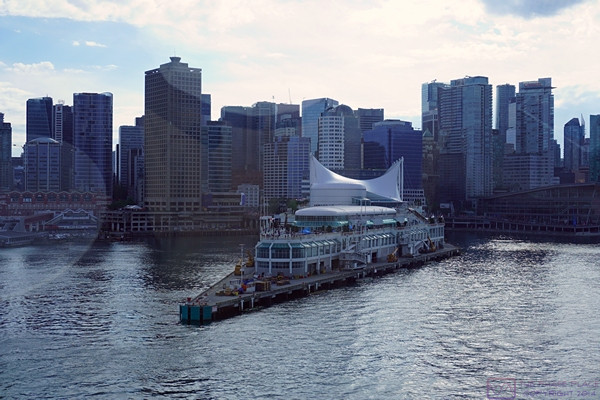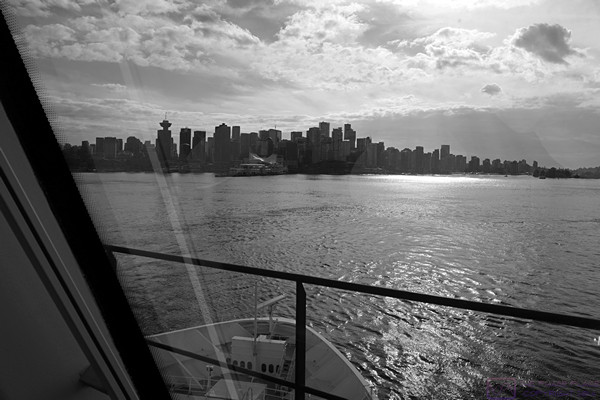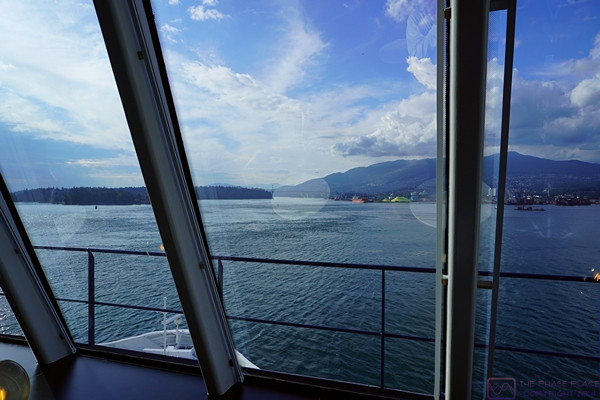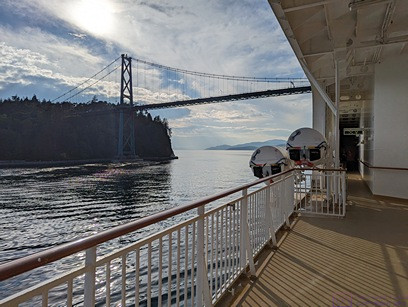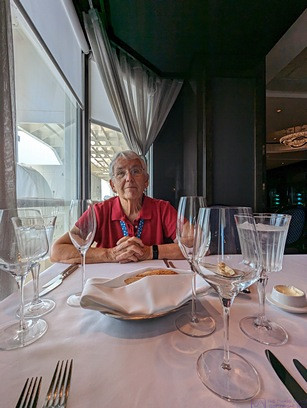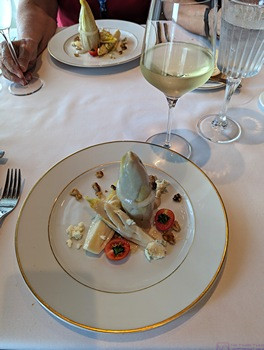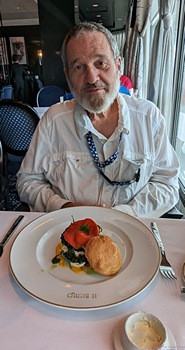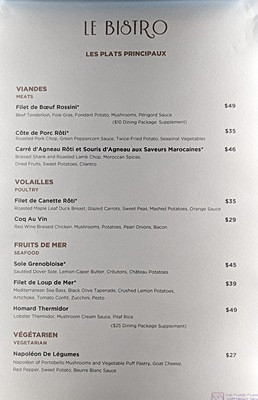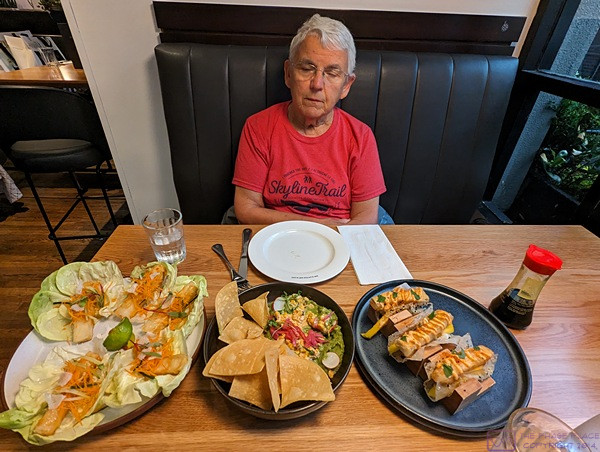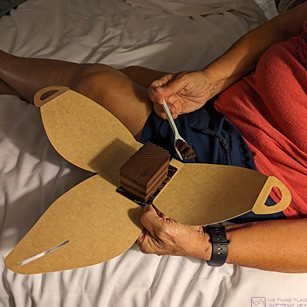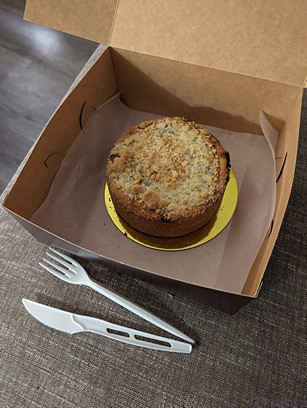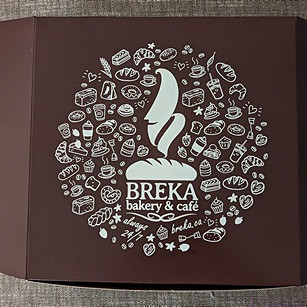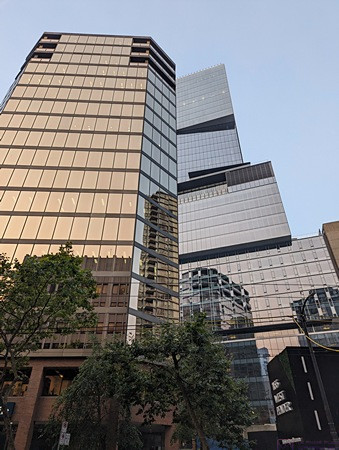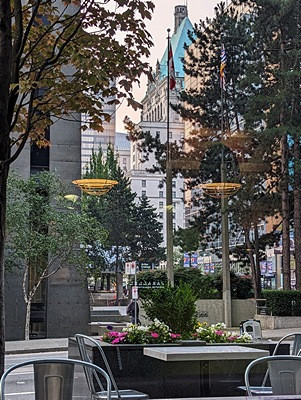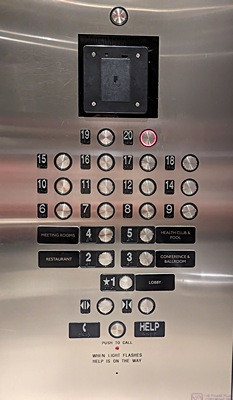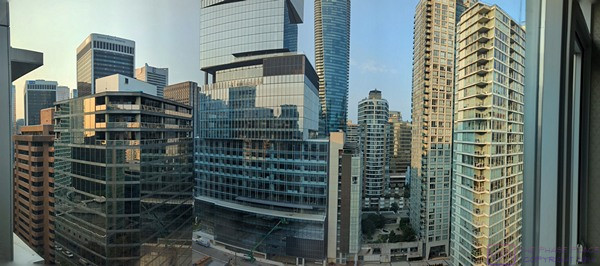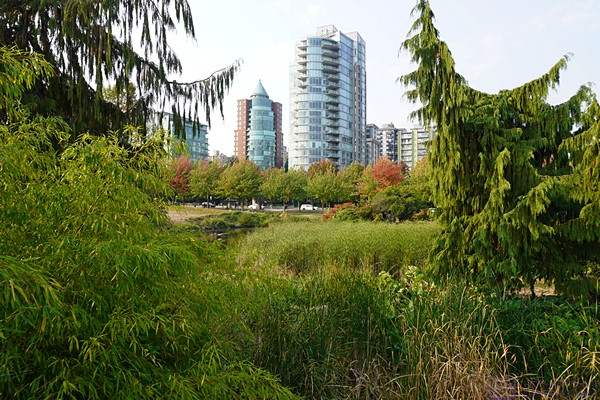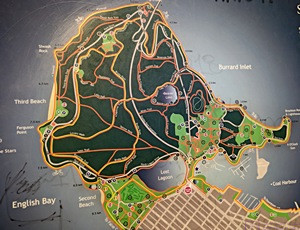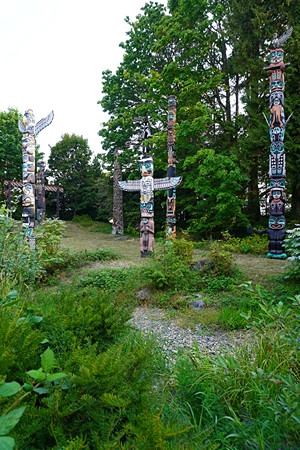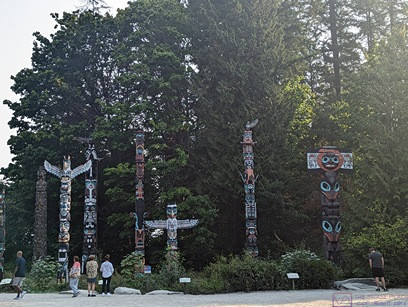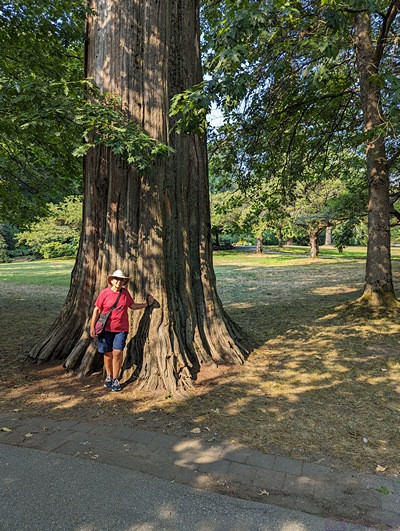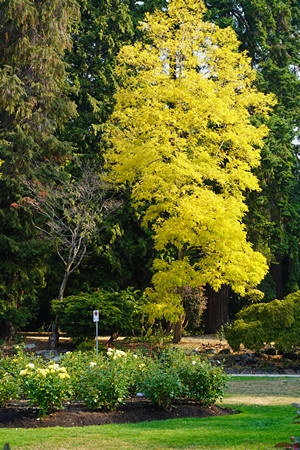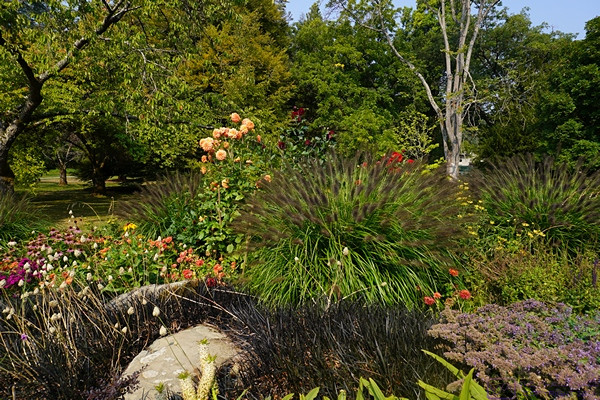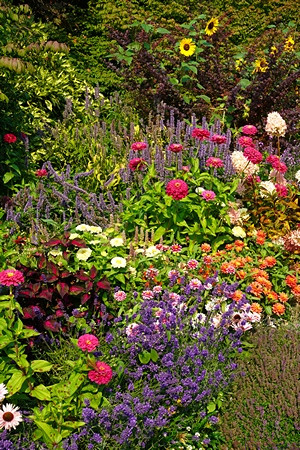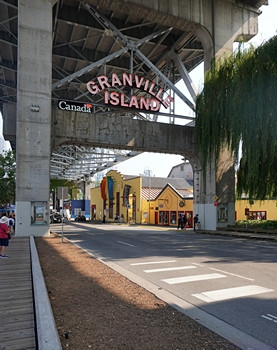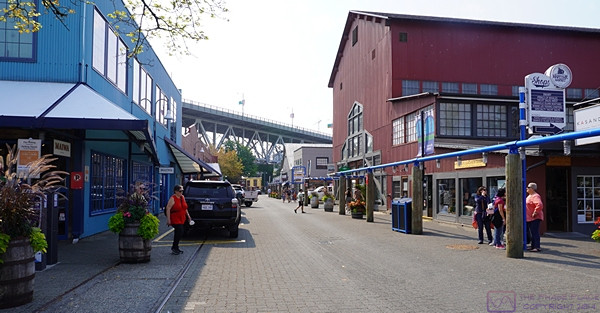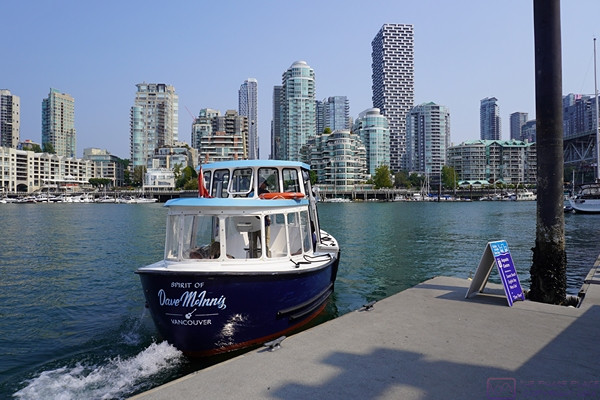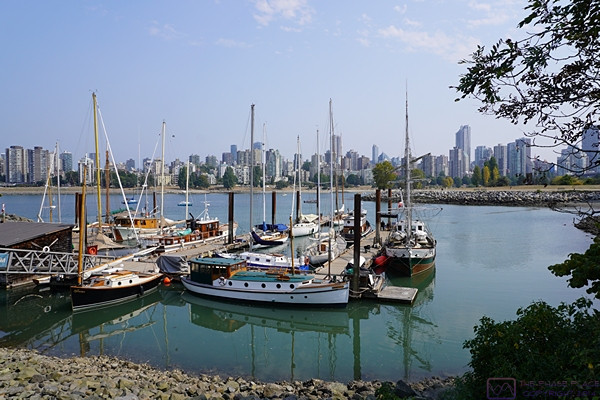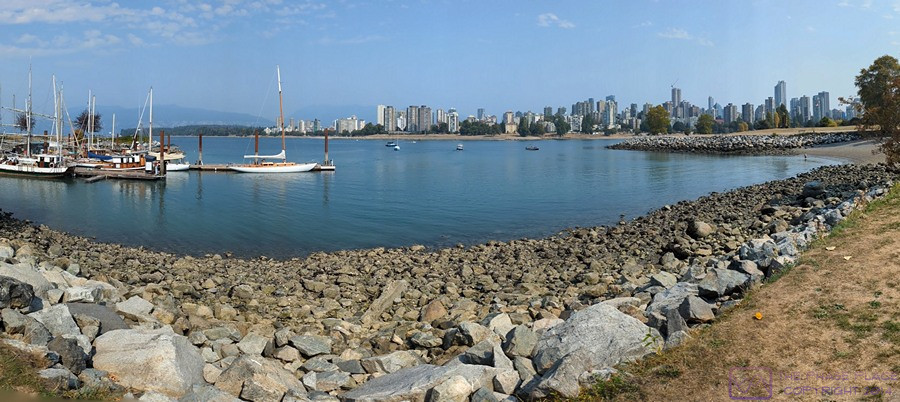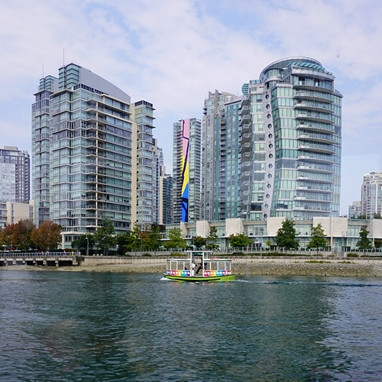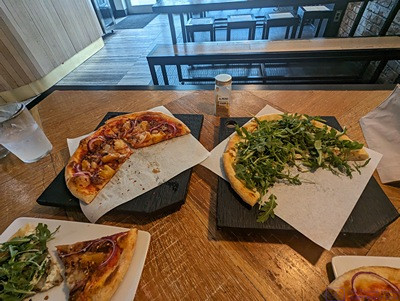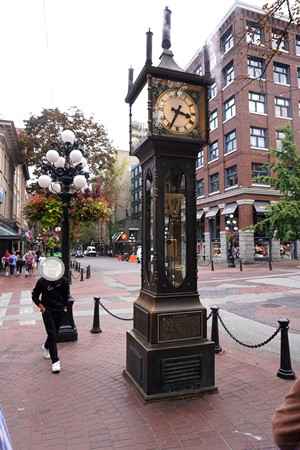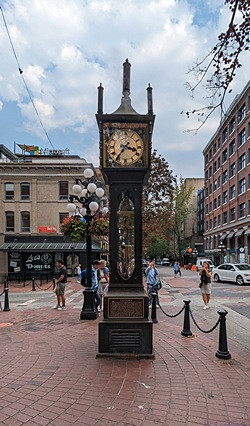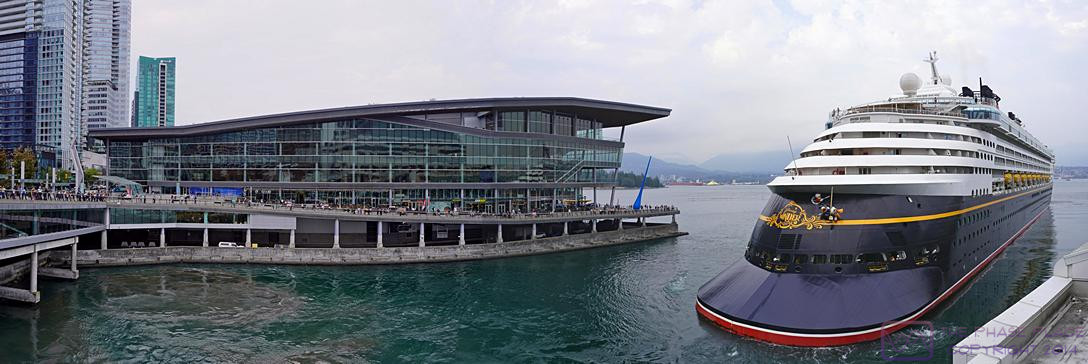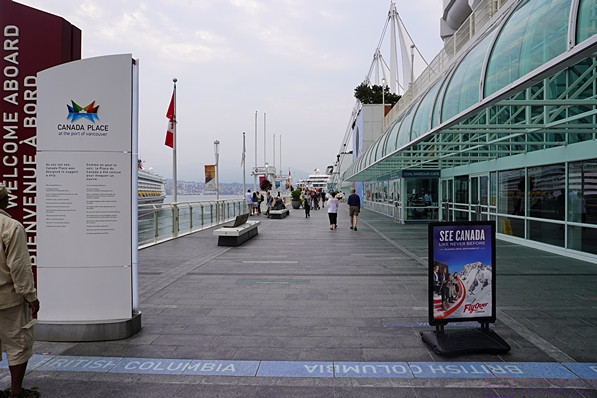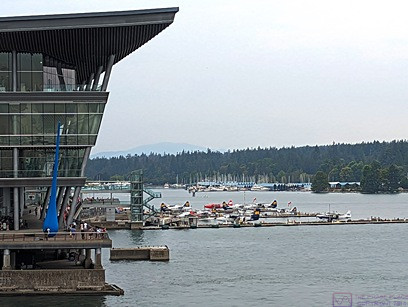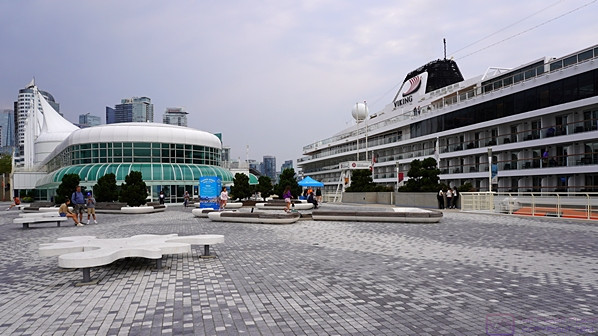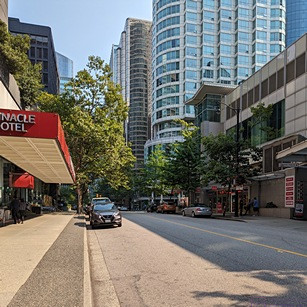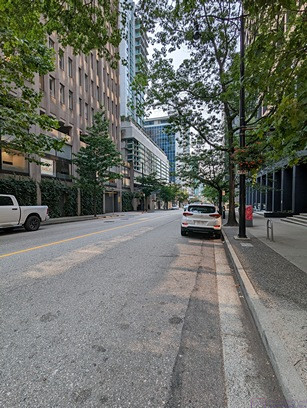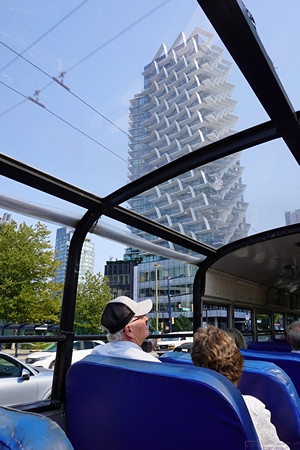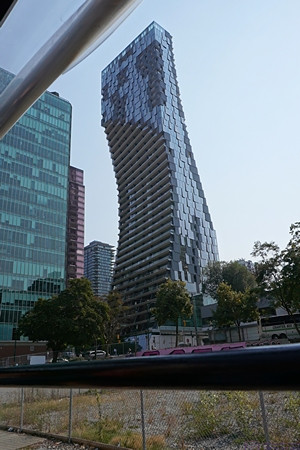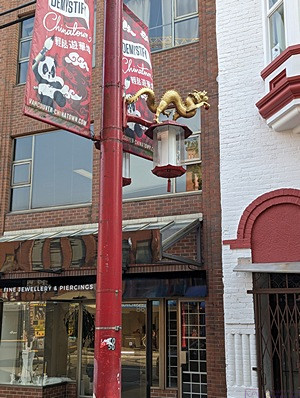Note: This is the 9th of 16 posts about our 21-day trip that included a 17-day (16-night) cruise on the Norwegian Cruise Line (NCL) ship SPIRIT from Vancouver, British Columbia to Honolulu, Oahu. This post has 27 photographs with captions and some narrative. All photos taken by me (Bruce) using a SONY alpha 6400 or Google Pixel 6 Pro unless otherwise indicated. (Photos by Linda taken with a Google Pixel 6.)
MONDAY 04 September 2023 — (T9,C6) Skagway, AK — Miners Camp, Bar & Brothel, White Pass & Yukon Railroad
This was day 9 or our trip and day 6 of our cruise. We had three shore experiences, but they were booked as one shore excursion that provided transportation between venues and ensured we met the starting times for each one, including getting back to the ship on time.
The excursion(s) started with a bus ride to the Liarsville Gold Rush Trail Camp & Salmon Bake, a private reproduction gold mining camp. It was nicely done, but only provided a sanitized glimpse at what life must have been like during the Klondike gold rush period, which started in 1896. The “camp” we experienced was certainly much cleaner than the reality of a by-gone era of fortune-seeking in the Alaskan wilderness. Our visit to the camp included panning for gold (we didn’t get any), a show in the Hippodrome (which was very good), and a buffet lunch (with LOTS of salmon on offer along with lots of side dishes).
Back in town, we toured the Red Onion Saloon and Brothel. It was a brothel in its day, but is now a museum (of course), although the saloon is still a functioning bar. Again, a somewhat “sanitized” glimpse, but a glimpse nonetheless, into another aspect of frontier life in the Klondike Gold Rush era.
Our third experience, and one of the highlights of our entire trip, was a ride on the White Pass and Yukon Railway from Skagway, AK through White Pass Summit (mm 20.4) and ending in Fraser, British Columbia (mm 27.7). The return trip to Skagway was by motorcoach, which is much faster than the return trip by train, but also gave us different views.
Paraphrased from Wikipedia (and other sources): The White Pass and Yukon Railway was completed in 1900. The 3-foot “narrow gauge” railway extended from Skagway, Alaska to Whitehorse in the Yukon Territory of Canada, a distance of 177 km (~ 110 miles). It was built in two sections; the first from Skagway, AK north to Carcross, BC (67.5 mi) and the other from Whitehorse, YT south to Carcross (42.9 mi).
When first built, the railway transported would-be miners, equipment, and supplies to the gold fields in the Yukon Territory, as well as points along the route. It continued to service mines all along the route until metal prices collapsed and the railway closed on October 7, 1982. The route reopened from Skagway to White Pass Summit in 1988 (20.4 mi) for tourist traffic only, to Fraser, BC in 1989 (an additional 7.3 mi for a total of 27.7 mi) and then to Bennett, BC in 1992 (another 12.9 mi for a total of 40.6 mi). The reopening from Skagway north was at the urging, and with the active support, of the cruise line industry, which was already calling on Skagway and saw the potential for a unique onshore experience. (The parent company of Carnival Cruise Lines is a major stakeholder in the current railroad operations.)
The hope has always existed that the entire route would reopen someday. A train from Skagway, AK reached Carcross Station, YT in 1997 for the “Ton of Gold Centennial Celebration,” a distance of 67.5 miles (~110 km), and this is the currently active portion of the original line. On October 10, 1997 a special passenger train (invitation only) ran from Carcross Station to Whitehorse, affirming that the rails were still intact and usable.
Here are some highlights of our day in photos and captions:
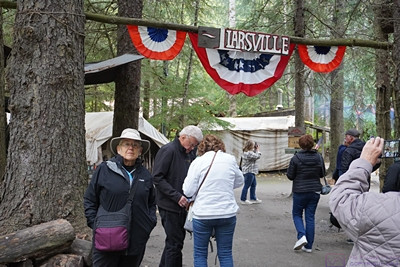
The entrance to Liarsville Gold Rush Trail Camp. The “camp” is mostly based on tents displaying various aspects of camp life in the Klondike Gold Rush era. “Rustic” permanent buildings on-site house a store, restrooms, and the Hippodrome entertainment venue.
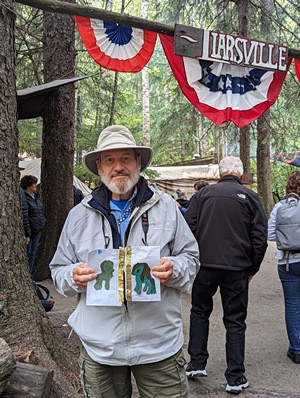
Our Liarsville location photo for grand-daughter Sadie with her Apa and Ama artworks. (Photo by Linda)
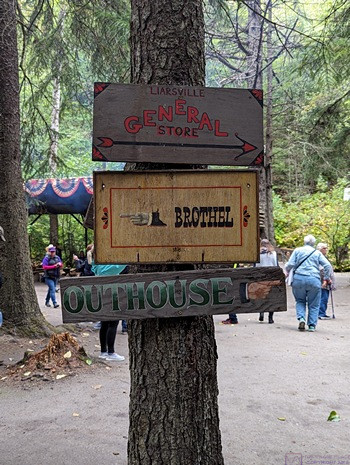
Signs to the most important places in the Liarsville camp (top-to-bottom): General Store, Brothel, and Restrooms. (Photo by Linda)
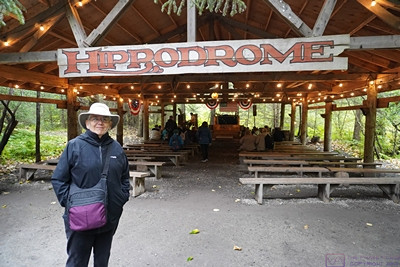
The Liarsville Hippodrome; a covered entertainment venue (that would not have been part of an 1897 Gold Rush camp). (Photo by Linda)
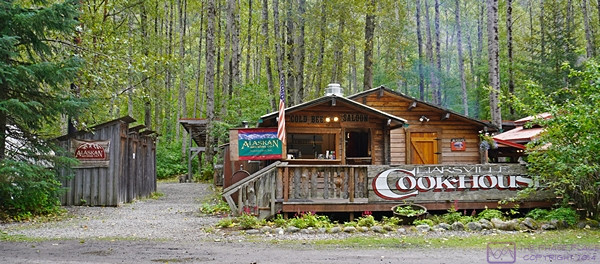
The Liarsville experience included a salmon bake luncheon. Shown here is the Cookhouse. It was here for tourists and employees and would not have been part of an authentic tent camp.
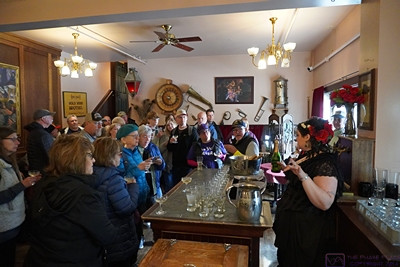
A view of the “back-room bar” at the Red Onion Saloon and Brothel. The “madam” serves drinks to our tour group and “explains” the operation of the establishment. The “rooms” are upstairs and we got to tour that area as well.
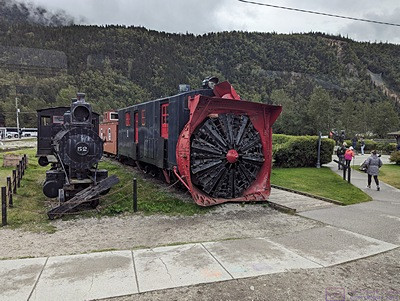
A massive snowblower used to clear the White Pass & Yukon Railway tracks. My research indicated that it still works, and is still used, and is quite a sight to see in operation. (Photo by Linda)
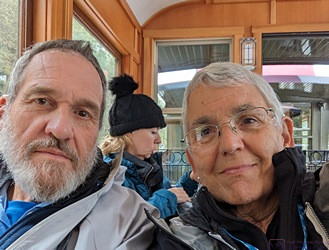
A rare selfie of the two of us. We are in our Pullman-style train car as the train starts its journey up to White Pass Summit and Fraser, BC. (Photo by Linda)
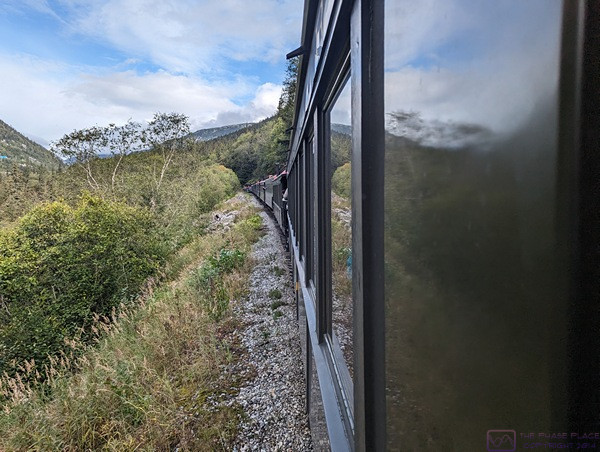
A view from of the left side of the train from in-between two of the passenger cars. The views were constantly changing, and always amazing, but not always easy to capture from a moving platform with limited choices of shooting angle (and lots of other passengers also trying to take photos). (Photo by Linda)
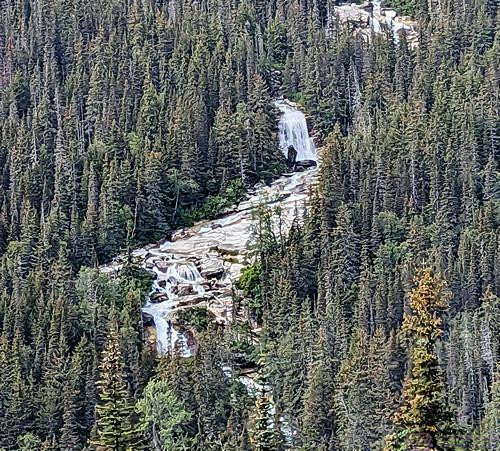
This a composite of two images that Linda shot with her phone. The Coastal Range are some serious mountains. (Photo by Linda)
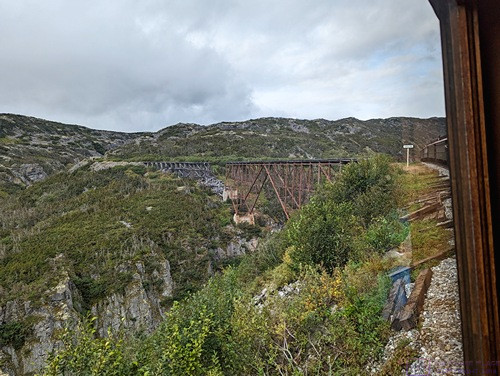
The train approaches one of several trestle bridges that span deep gorges. The construction of this rail line was quite a feat of engineering and labor. (Photo by Linda)
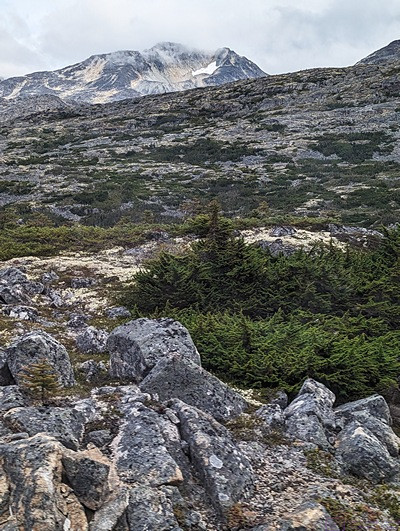
In the area around White Pass Summit, the highest surrounding peaks are in the 6000 to 7000 ft AMSL category. The highest peak anywhere near Skagway is Mt. Fairweather. Located 89 miles to the SW of town, near the ocean coast, it rises to 15,325 ft AMSL. It is part of a range with numerous peaks in the 10K, 11K, and 12K foot ASL categories, and must be quite a sight to see from the ocean. (Photo by Linda)
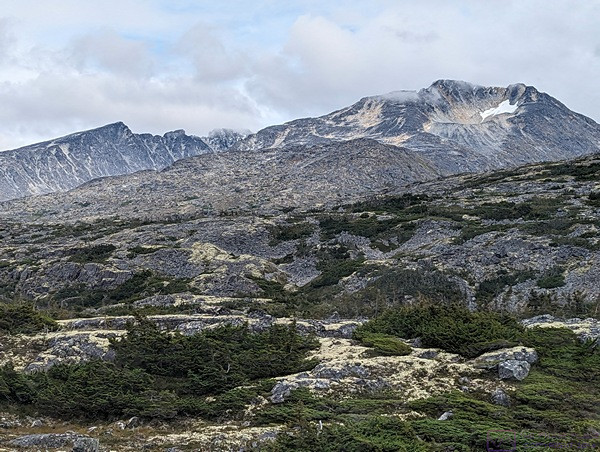
Mountains, mountains everywhere, with snow still present in the highest elevations. (Photo by Linda)
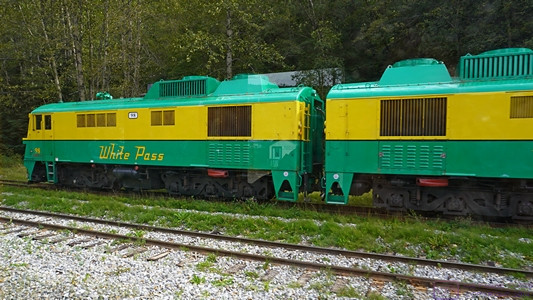
The WP&YR uses several different types of diesel-electric locomotives, and still operates a couple of steam engine locomotives. Our locomotives were black with a red horizontal stripe, but I have been unable to identify the exact model.
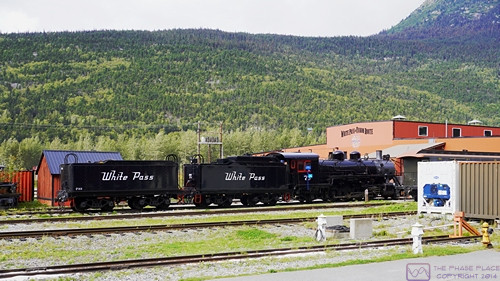
If this photo is of the maintenance yard, it is out of order. The sequence number (assigned by the camera), however, indicates that it is in the correct order, so I’m not sure what is being shown here, but I have included it anyway.
A view of our passenger car from the rear as Linda (closest person to the camera on the right) enjoys the scenery.
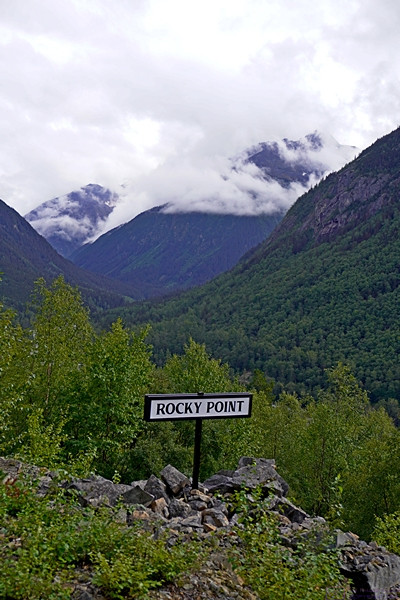
Well, this is obviously a view from Rocky Point, which is mm 6.9, so we still had most of the trip ahead of us. The day was obviously cloudy, but the views were spectacular nonetheless.
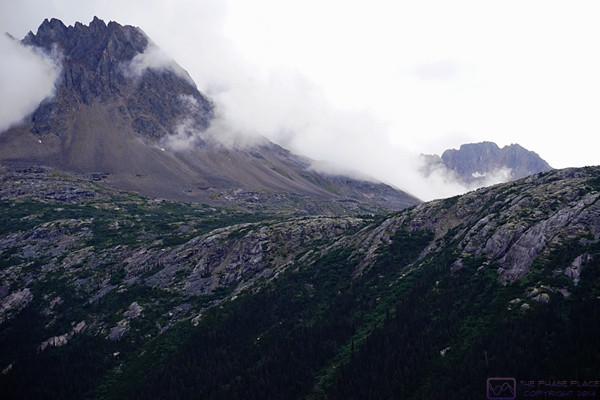
A jagged peak towers into the clouds. Like I said earlier, the Coastal Ranges are serious mountains.
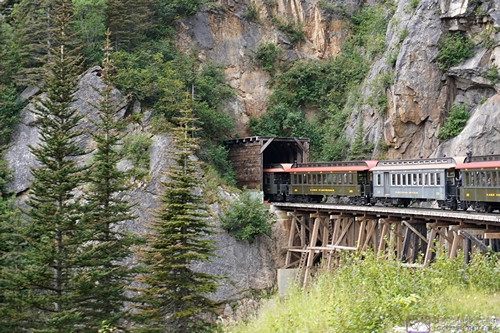
Our train crosses a gorge and disappears into a tunnel. There are only two tunnels on the WP&YR route, Tunnel Mountain at mm 16.0 and a newer one (1969) at mm 18.8. I was unable to determine which one this was after the fact.
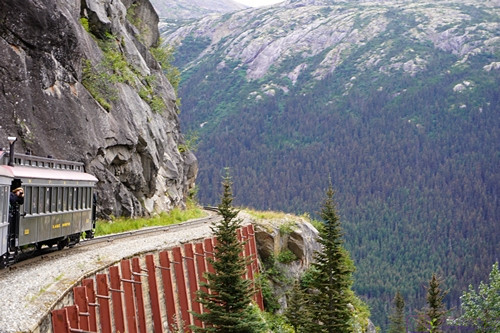
The end of our train as it is about to cross a trestle bridge over a gorge and follow the rest of the train into a tunnel.
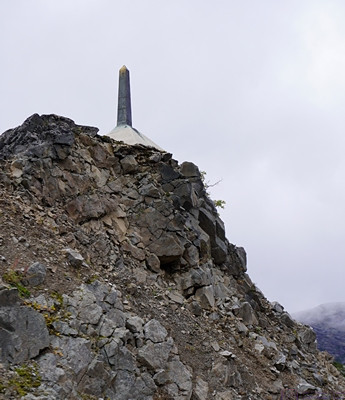
White Pass Summit and the monument marking the boarder between Alaska (USA) and British Columbia (Canada). The Summit at White Pass is 2,864 ft AMSL. The train starts in Skagway a few feet above sea level and climbs ~ 140 feet per mile traveled, on average. That’s a 2.65% grade, on average.
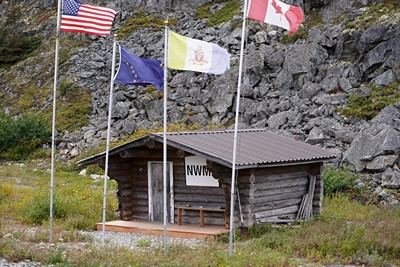
The (old) North West Mounted Police (NWMP) station. I think this was right after crossing into British Columbia, but I’m not sure of the exact location.
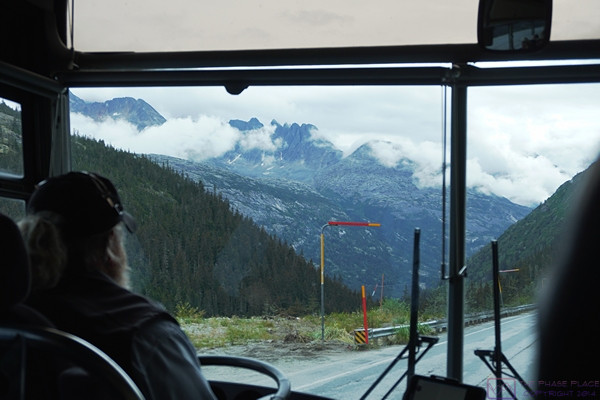
Our train ride ended in Fraser, British Columbia, where we cleared Canadian Customs before boarding a motorcoach for the return trip to Skagway via the Klondike Highway.
…
